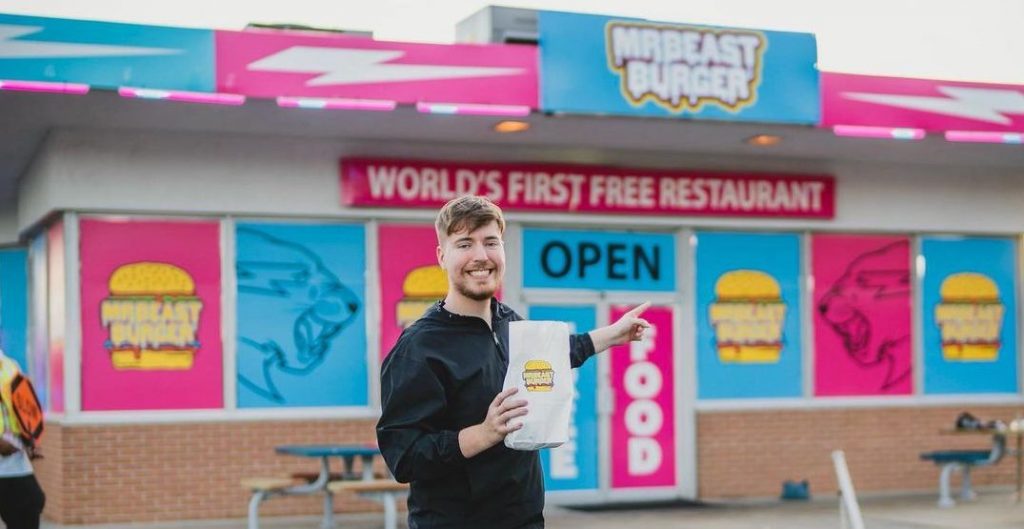Blog
MrBeast Burger — when social influence taps the digital dining trend
The story of Mr Beast launching his own online burger brand (Mr Beast Burgers) shows the power of genuine social influence and one of the key changing customer behaviours that have been accelerated by the global pandemic.

Who is MrBeast?
MrBeast, 22-year-old Jimmy Donaldson, is a global YouTube sensation with close to 50M subscribers across his channels. MrBeast isn’t your average Youtuber creating hour-long stunt videos for his growing army of fans and with an estimated 3bn views has built a global video presence many household name celebs and big-name brands would envy and with earnings close to $25M he is reportedly the second highest-grossing YouTube star globally.
One key thing that sets MrBeast apart is his sometimes flippant approach to handing out cash and prizes to his fans, though it genuinely seems as if the whole moneymaking side of his YouTube endeavour seems to mystify him.
In the past, he has set “last to leave” challenges in his videos where he offers viewers who keep watching prizes, not only that but he has given away cars, donated to emerging new Twitch streamers, and handed over thousands of dollars to in need fans, Uber drivers, and others.
Building a burger empire, overnight
MrBeast set about launching a fast-food brand in the only way he knew how by giving his fans money to try his burgers for free.
In his mad-cap launch video, he opens his first location, in a small town in North Carolina just a few miles from Jimmy’s hometown of Greenville, to huge crowds with lines said to be over 20 miles long. Not content with giving away his burgers for free as a sample of what was to come from his fledgeling burger brand, MrBeast and his best friends, Chandler, Chris, and Karl, hand over thousands of dollars in cash to unexpectant fans. One fan, who’s car is clipped whilst waiting in line, is even given a brand new car to drive away in.
Some would say this incredible generosity is just a stunt to drive up views and in-turn receive more ad dollars from his incredibly loyal audience but Mr Beast has committed to giving a donation for every Mr Beast Burger sold to help feed hungry families across America.
Following this viral stunt, Mr Beast announced he was launching Mr Beast Burger for real. Launching in over 300 locations across the US Mr Beast Burger is available through digital platforms like Uber Eats, Doordash, Grubhub and others along with his own dedicated Mr Beast Burger app, which quickly sky-rocketed to the number 1 spot on the Apple app store.
By launching in other 300 locations Mr Beast Burger instantly became a major player in the fast-food market, competing with the likes established brands like Shake Shack and In-and-Out Burger who have 300 and 400 locations respectively.
Just take a moment to reflect on that, overnight a 22-year-old YouTube star has built and launched one of the biggest fast-food brands in the US. That is incredible and shows the power of true social influence. It also showcases the trend, accelerated of course by the COVID pandemic to digital dining.
The Rise and Rise of Digital Dining
We have seen a huge behavioural shift to digital dining and the COVID pandemic has undoubtedly accelerated the shift to food delivery, with eMarketer predicting digital delivery sales to top $45 billion, more than double 2019.
With an estimated 60% of restaurant meals now not being consumed off-premises, we are seeing a huge rise in ghost kitchens in which rather than have a restaurant space digital-only dining brands are created and sold through third-party delivery apps or directly through their own website or mobile app. Companies like Crave, and Nextbite in the US have launched hundreds of online-only food delivery brands and this trend is being picked up by the established fast-food and delivery brands.
The pandemic has re-shaped how we think about dining and for many will have a lasting impact on how and where we dine and it seems Mr Beast Burger and others are just the start of a trend towards digital dining accelerated strong digital customer service, convenience, and in many cases price. Eating out is likely to see a decline beyond the pandemic 22% of people globally saying they will use food delivery services more often, whilst 42% say they will eat out at restaurants less after the pandemic has ended.
This is a huge behavioural shift in just a few months, and it is yet to be seen whether this will play out as the data suggests but brands and now even influencers are seeing the huge opportunity to disrupt the food and dining industry.
Tom Jarvis – Founder & CEO
